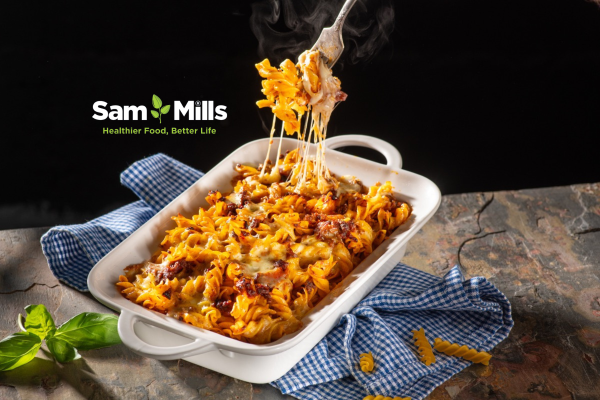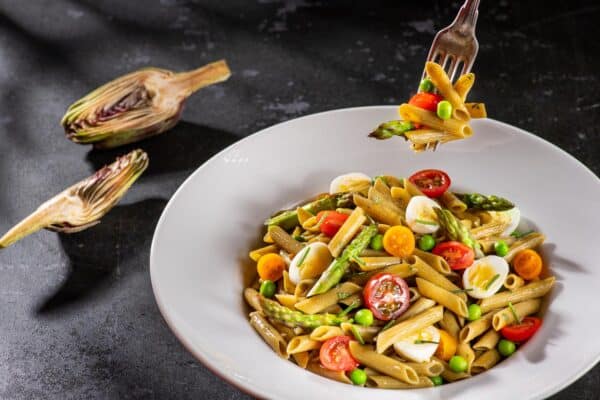How to cook gluten-free and additive-free pasta properly: The complete guide
Sam Mills pasta - gluten-free and additive-free is a great choice for those who want a healthy, balanced diet without artificial ingredients. These pastas prepared from natural ingredients require slightly more attention to the cooking method and time. In this article, you will find useful tips on how to properly cook gluten-free and additive-free pasta, so that you have a pleasant and delicious culinary experience.
-
About Sam Mills pasta
Sam Mills pasta is gluten-free and additive-free pasta, it is manufactured from natural ingredients, such as lentil, chickpea, pea or corn flour, without chemical additives, so without E's. The 100% natural varieties are healthier and have an authentic flavor, but are usually more sensitive to cooking.
-
Use plenty of water and a large saucepan
Gluten-free and additive-free pastas tends to release more starch during cooking, which can cause them to stick. It is essential to use a generous amount of water – usually 1 liter of water for every 100g of pasta. Choose a wide and roomy saucepan, so that the pasta has room to boil freely, without crowding.
-
Add salt to the water
During cooking, salt not only enhances the taste of pasta, but also helps preserve its texture. Add 1-2 teaspoons of salt to the boiling water.
-
Stir the pasta when putting in the water
The water should already be at boiling point before adding the pasta. Add the pasta, stirring gently with a wooden or silicone spoon to separate it. This is an essential technique to prevent them from sticking. Cook the legume pasta on low heat, while cooking the corn pasta over high heat.
-
Carefully monitor the cooking time
Gluten-free and additive-free pasta can have a different cooking time than the traditional wheat pasta. This time varies between 7-10 minutes, depending on the ingredients used and the shape of the pasta. The cooking time is indicated on each package. Start checking the consistency of the pasta 2 to 3 minutes before the cooking time indicated on the package. Pasta should be cooked al dente, meaning firm to the bite, but not hard or crumbly. al dente, adică ferme la mușcătură, dar nu dure sau sfărâmicioase.
-
Avoid excessive boiling
One of the biggest challenges in cooking gluten-free pasta is avoiding overcooking, which can lead to a soft, sticky texture. The exact time depends on each type of pasta, so don't just rely on the instructions on the package – taste the pasta every 1-2 minutes during the last stages of cooking to assure you don't go over the optimum point or your own preferences.
-
To rinse or not to rinse?
This step is optional and depends on what you are going to do with the pasta. If you are going to use them in a cold salad or if you feel they are too sticky, you can quickly rinse them in cold water to stop the cooking process and oust excess starch. If you plan to immediately combine them with a sauce, avoid rinsing, as the starch on the surface of the pasta helps the sauce stick better.
-
Save a little boiling water
Before draining the pasta completely, reserve a few tablespoons of the boiling water. This is rich in natural starch (hence the appearance, the water becomes more "turbid", with more sediment) and can be used to emulsify the sauce, giving it a creamier and more homogeneous consistency. Moreover, the cooking water helps the sauce to bind with the pasta, preventing them from drying out.
-
Combine the pasta immediately with the sauce
After straining, immediately transfer the pasta to a pan with the heated sauce. Pasta without additives tends to cool and dry out faster, so it's important to combine it quickly with your favorite sauce. Mix well on low heat for 1-2 minutes so that the flavors meld and you get an even texture.
-
Serve the pasta immediately
Gluten-free and additive-free pasta retains its texture and taste best when served immediately after preparation. If you need to keep them, add a few drops of olive oil and stir well to prevent sticking, then reheat them gently before serving.
Conclusion
Cooking gluten-free and additive-free pasta may seem complicated in the beginning, but with a few tricks and the right techniques, you'll be able to achieve delicious dishes each time. Respecting the boiling time, stirring frequently and using sufficient amounts of water are essential to prevent the pasta from sticking or crumbling. Experiment with different types of pasta and sauces in order to find the perfect combination for you and your family.







